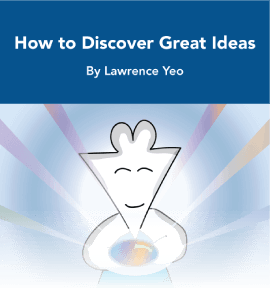Why I Write About the Human Condition
One of my favorite albums of all-time is Nas’ Illmatic. Nas was just 20 years old when he wrote and recorded this masterpiece, and his ability to conjure a vivid depiction of Queens in the mid-90s was unparalleled. It had the perfect combination of beats and lyricism required to paint the imagery of despair, hope, betrayal, and love that Nas experienced in his life.
I won’t go too much into the album itself, as I don’t have much to add to the plethora of reviews about the work. Rather, I wanted to surface one of the most memorable pieces of commentary I’ve read about it, as it made me reflect on the nature of art and its representations.
A decade after Illmatic‘s release, Matthew Gasteier wrote:
Illmatic is the best hip-hop record ever made. Not because it has ten great tracks with perfect beats and flawless rhymes, but because it encompasses everything great about hip-hop that makes the genre worthy of its place in music history.
Stylistically, if every other hip-hop record were destroyed, the entire genre could be reconstructed from this one album.
Now, that last sentence is certainly debatable, but it points to something interesting. We generally think of genres as collections of individual works that are thematically united. Style is one of these themes, subject matter is another, and sometimes it’s as simple as the time period in which these works are released. But for the most part, a genre is a product of emergence, where a mass of art gives rise to a greater collective unit. In short, an ant is to a colony as an album is to its genre.
However, the quote from Gasteier signifies that there are certain works that not only symbolize a genre, but also define it. That they embody all the best characteristics the genre has to offer in one cohesive body of work. And at the same time, the work must also feel familiar enough so that somebody that is completely foreign to the genre can resonate with it.
If hip hop never existed, you’d still be familiar with rhythm, melody, lyricism, all that. The core tenets of what make hip hop a musical art form will be very much alive in you. So if an alien were to come down and play Illmatic, you can hear the familiarities of music as a whole, but the ways in which its individual elements are stretched and harmonized will be completely novel.
This means that genre-defining works aren’t just about embodying the best of what the genre has to offer. That’s a big part of it, but the other part is that it has to embody something that already unites humanity. It has to be familiar enough to be welcomed, yet unfamiliar enough to be discussed.
The reason why I write about the human condition is because it’s the only thing that stays constant across time. Using the classic “fixed vs. variable business expenses” as a model here, the consequential variables are culture and technology. These are the things that most of the world pays attention to, primarily because they change so frequently and we humans are obsessed with a sense of progress. These are the things that get the most attention on social media, the news, and so forth.
But the fixed part is good ole human nature. You may not be able to relate to the latest news of a cryptocurrency crash, but you’ll certainly be able to understand the inner workings of fear, greed, and uncertainty. You may not be able to understand an authoritarian’s desire to take over a neighboring country, but you’ll know what it means to desire something so much that you can’t stop thinking about it.
As they say, history keeps on rhyming, and the snider version of this is that “history is one damned thing after another.” And while this is true, there’s also a beautiful side to this, and it’s that the great parts of human nature continue to repeat as well.
The reason why Illmatic exists is because Nas wanted to channel his life lessons through music, and not through violence. He decided to accept the fact that he had a gift, and had enough self-awareness to know that it was housed within the domain of creative expression. And it’s through that awareness that a genre-defining work was produced.
This self-awareness is something that we all embody as well, and is also an inherent part of human nature. It’s not just greed, lust, and fear that runs through our veins; there’s also compassion, love, and curiosity as well. This is why history moves in cycles, as periods where our worst impulses dominate tend to be corrected and then accelerated into prosperity when the best of ourselves take over.
It is for this reason that I write about the human condition. If we’re constantly playing at the intersection of the best and worst of ourselves, then my goal is to at least remind myself that I’m capable of accessing a better version of that self at any time. I don’t do this for praise or to create something genre-defining; rather, I want to tap into something that connects all of us, but to do it in a way that feels novel enough so that it’s memorable.
Ultimately, I guess that’s what making art is all about. You create for yourself, but do it with style. And through this process, you just may end up in an entire genre of your own.
_______________
_______________
For more stories and reflections of this nature:



